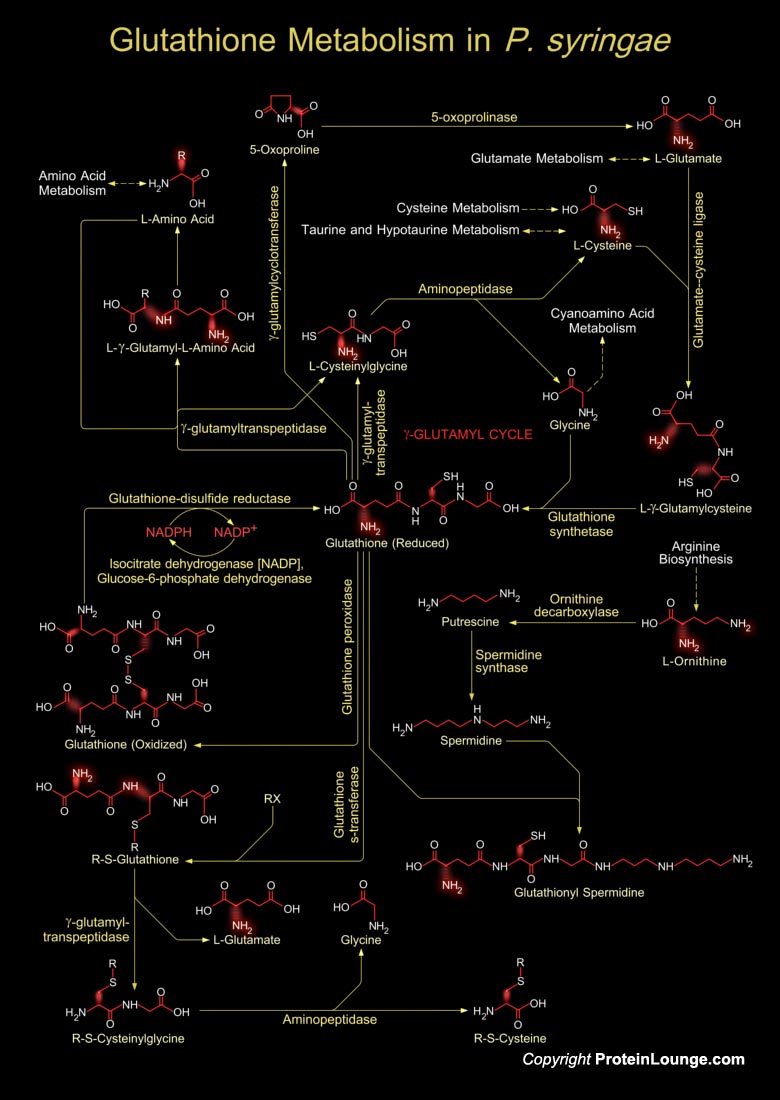
Pseudomonas syringae is one of the best studied plant pathogen with more than 50 pathovars. Each pathovar is known to infect a characteristic group of host plant species (Ref.1). P. syringae is a Gram-negative bacterium and its different strains are known for their diverse interactions with plants. Among these strains, P. syringae pv. tabaci is a non-host pathogen of Arabidopsis thaliana (Ref.2). P. syringae survives saprophytically on the plant surface, and after the entering plant tissues through wounds or natural openings (such as stomata), it reproduces endophytically in the apoplastic space (Ref.3). P.syringae has evolved two principal virulence strategies which are a) suppression of host immunity b) creation of an aqueous apoplast (Ref.1). To survive both in the[..]
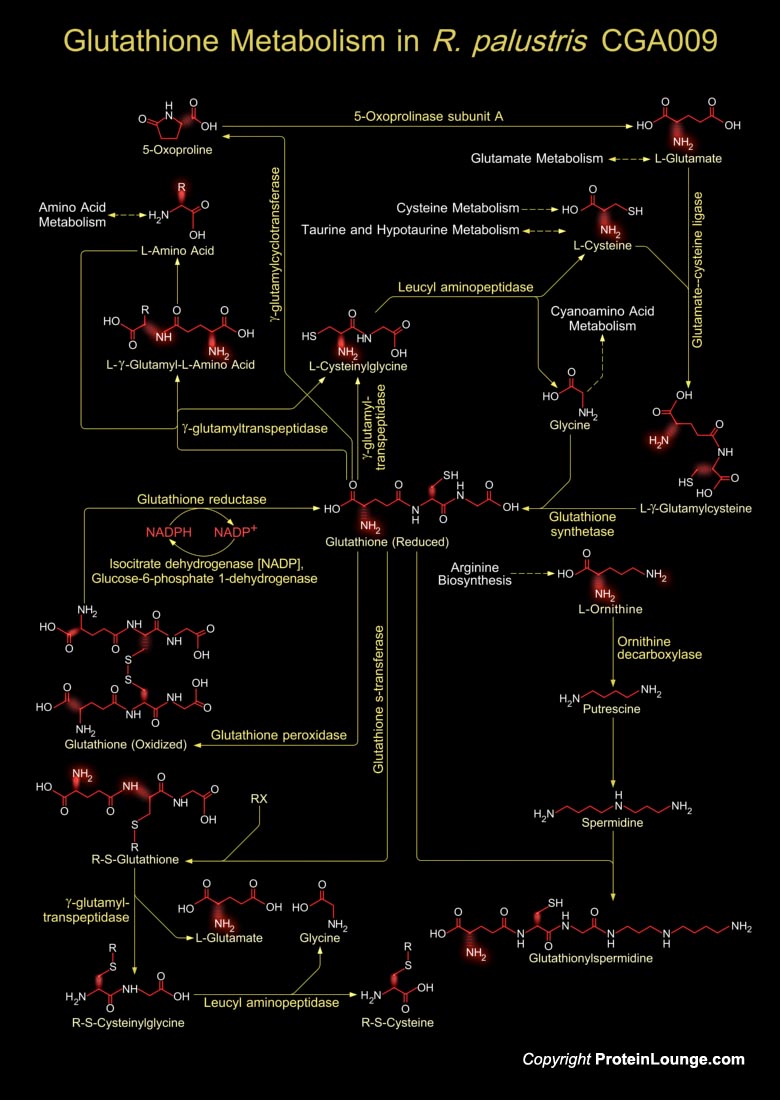
Rhodopseudomonas palustris is a rod-shaped, Gram-negative purple nonsulfur bacterium. It is an alphaproteobacterium that serves as a model organism for studies of photophosphorylation, regulation of nitrogen fixation, production of hydrogen as a biofuel, and anaerobic degradation of aromatic compounds. This bacterium is able to transition between anaerobic photoautotrophic growth, anaerobic photoheterotrophic growth, and aerobic heterotrophic growth. It is found in terrestrial soil and water environments and grows phototrophically under anaerobic conditions. Under such conditions, it uses light as a source of energy and either organic compounds or carbon dioxide as carbon sources. R. palustris also grows aerobically as a heterotroph, and some strains grow anaerobically[..]
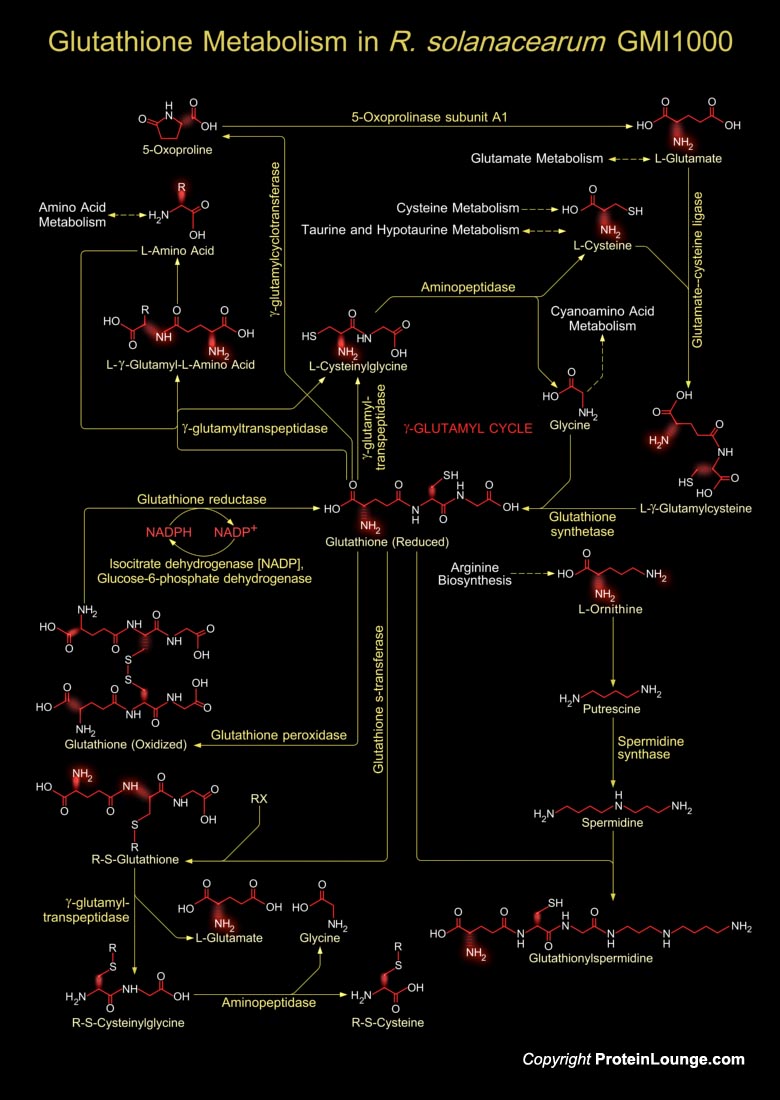
Ralstonia solanacearum is a Gram negative β-proteobacteria. It is an aerobic non-spore-forming, Gram-negative, plant pathogen. R. solanacearum is soil-borne and motile with a polar flagellar tuft. It colonises the xylem, causing bacterial wilt in a very wide range of potential host plants (Ref.1). Although R. solanacearum is considered a plant pathogen, it mainly behaves as a soil bacterium of saprophytic life with an extremely versatile lifestyle, which allows the bacteria to survive in the soil for long periods in the absence of its host plant his phytopathogen invades the vascular tissue in a systemic way and has a wide range of hosts with arge geographic distribution and diverse pathogenic behavior. R. solanacearum can live for long periods in[..]
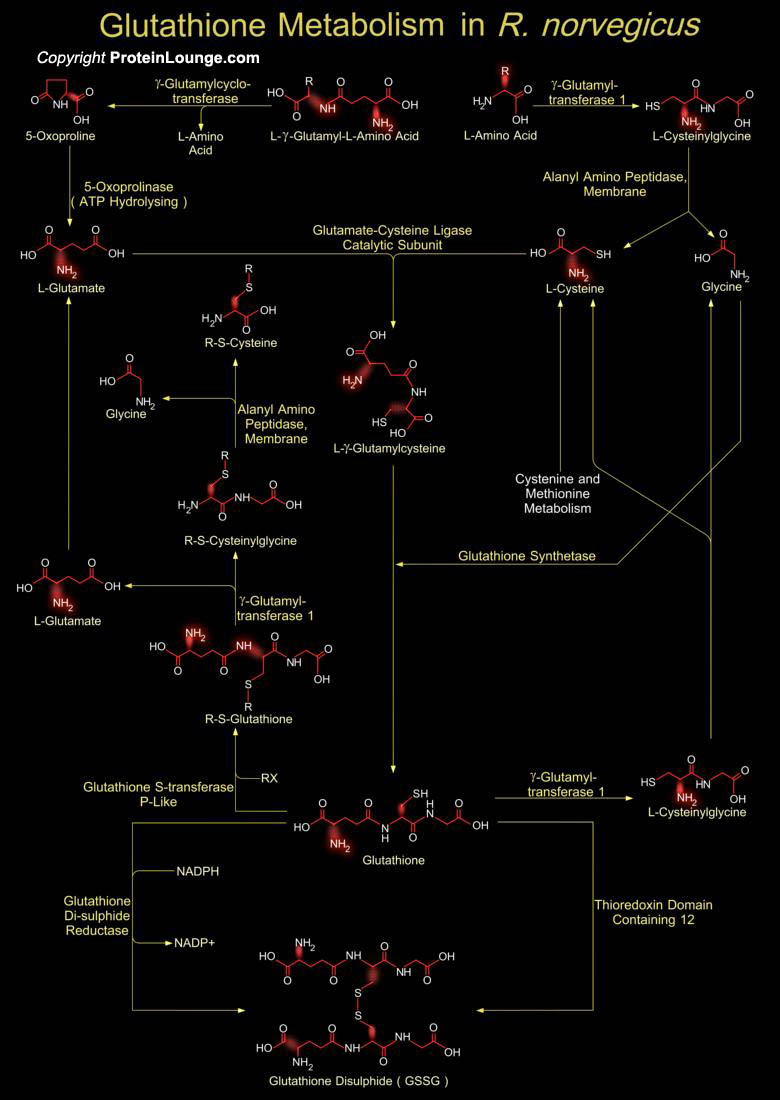
Glutathione is a sulfhydryl (-SH) antioxidant, antitoxin, and enzyme cofactor. It is ubiquitous in animals, plants, and microorganisms, and being water soluble is found mainly in the cell cytosol and other aqueous phases of the living system. Glutathione is composed of Glutamate, Cysteine and Glycine that has numerous important functions within cells. The tripeptide Glutathione is part of an integrated antioxidant system that protects cells and tissues from oxidative damage. Oxidative stress can result from exposure to excessive amounts of endogenous and exogenous electrophiles (Ref.1). Glutathione exists in two forms. The antioxidant "reduced Glutathione" tripeptide is conventionally called Glutathione and abbreviated GSH; the oxidized form is a[..]
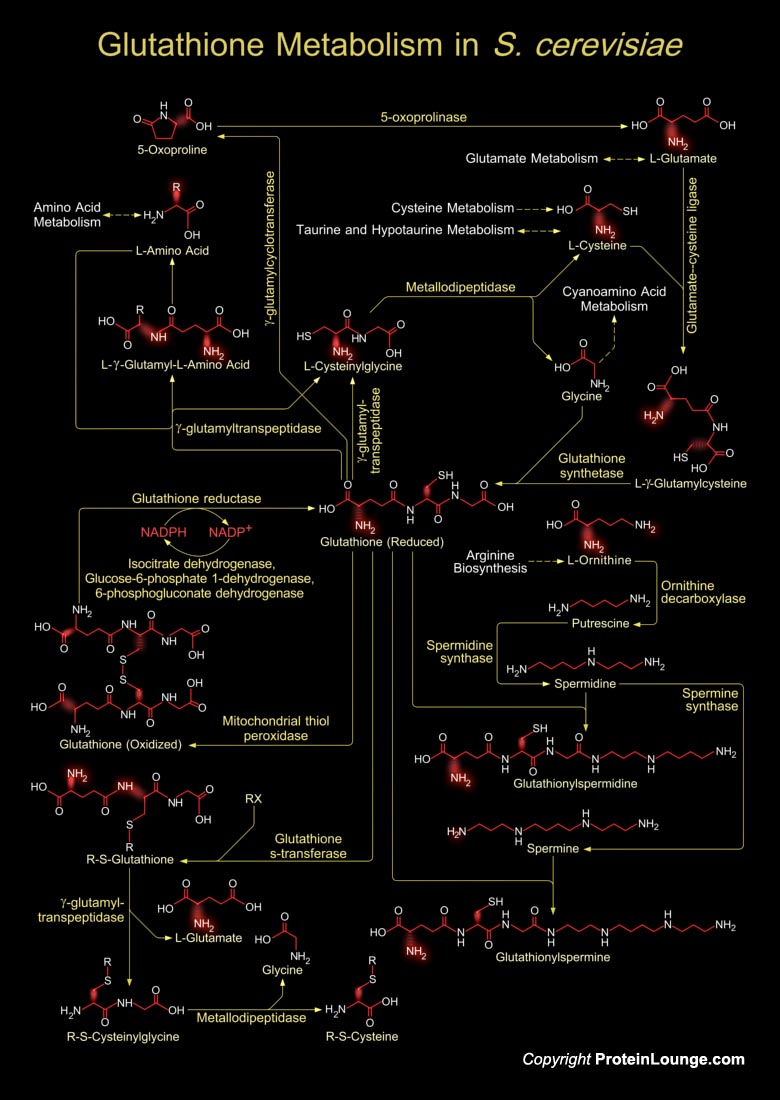
Saccharomyces cerevisiae (S. cerevisiae) is a unicellular fungus, possessing a nuclear genomic DNA of 12068 kilobases (kb) organized in 16 chromosomes. Its genome has been completely sequenced by Goffeau et al. 1996 and was found to contain approximately 6000 genes, of which, 5570 are predicted to be protein-encoding genes. S. cerevisiae has been an essential component of human civilization because of its extensive use in food and beverage fermentation in which it has a high commercial significance. S. cerevisiae is involved in the production of many fermented beverages, such as wine, beer and cider; distilled beverages, such as rum, vodka, whisky, brandy, and sake; whereas in other alcoholic beverages worldwide, from fruits, honey, and tea (Ref.1). During the[..]
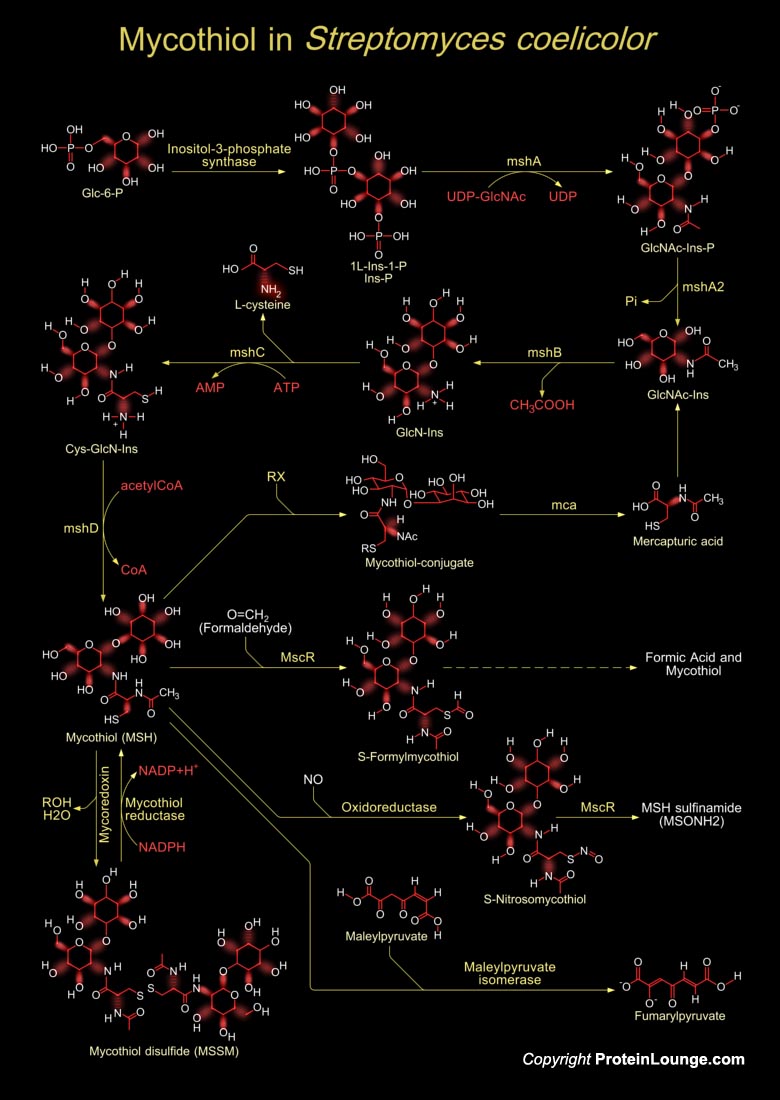
Streptomycetes are soil dwelling, Gram-positive, GC-rich bacteria belonging to the class Actinobacteria. They have a unique capacity to produce novel bioactive compounds and are the most known to produce metabolites like antibiotics, immunosuppressants, antivirals and herbicides. Filamentous Streptomyces bacteria produce bioactive secondary metabolites that account for more than half of all known antibiotics as well as anticancer, anti-helminthic and immunosuppressant drugs (Ref.1). Streptomycetes starin Streptomyces coelicolor is amongst the best studied representatives of the genus Streptomyces, which is the largest genus within the Actinobacteria. Streptomycetes have a remarkably complex developmental life cycle and the capacity to produce a plethora of natural[..]
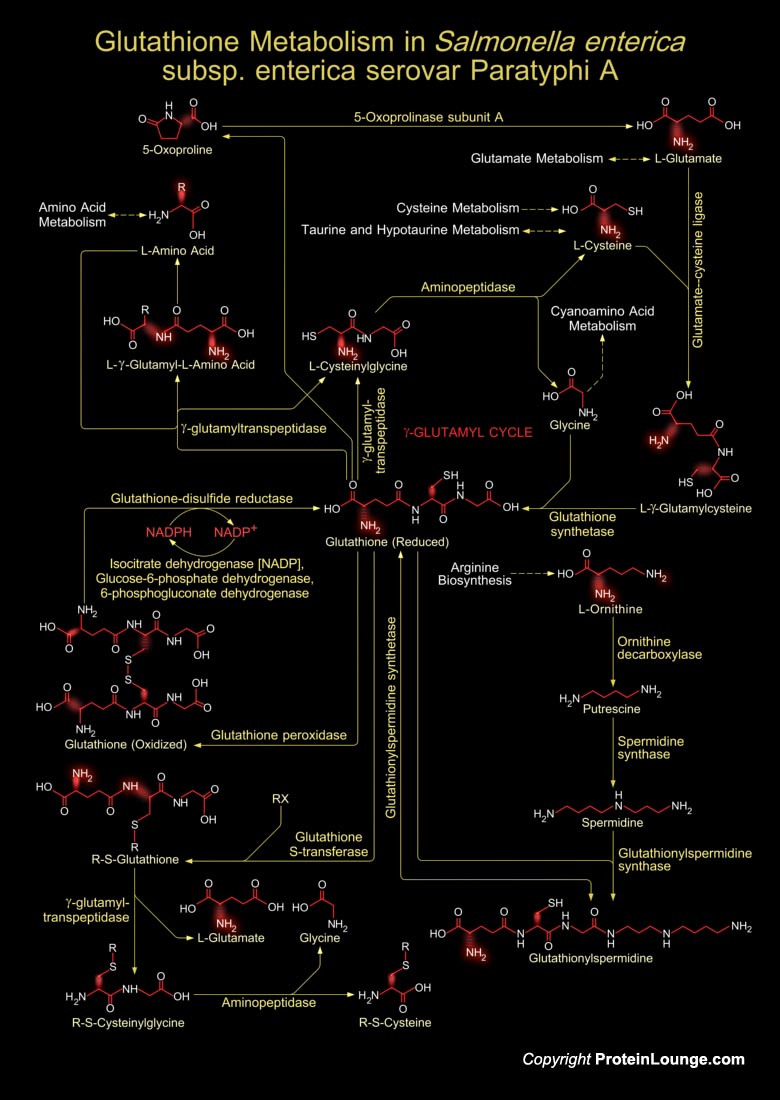
Salmonella enterica subsp. enterica is a subspecies of Salmonella enterica, the rod-shaped, flagellated, aerobic, Gram-negative bacterium. Many of the pathogenic serovars of the S. enterica species are in this subspecies, including that responsible for typhoid. Salmonella is classified into >2500 serovars. Among the >2500 Salmonella serovars, several serovars have been identified as major pathogens to humans and domestic animals, including Salmonella Typhimurium, Enteritidis, Typhi, Newport, Heidelberg and Paratyphi A (Ref.1). Six subspecies of S. enterica are currently recognized in Salmonella enterica. Subspecies I (subspecies enterica) is responsible for nearly all infections in humans and warm-blooded animals, while five other subspecies are isolated[..]
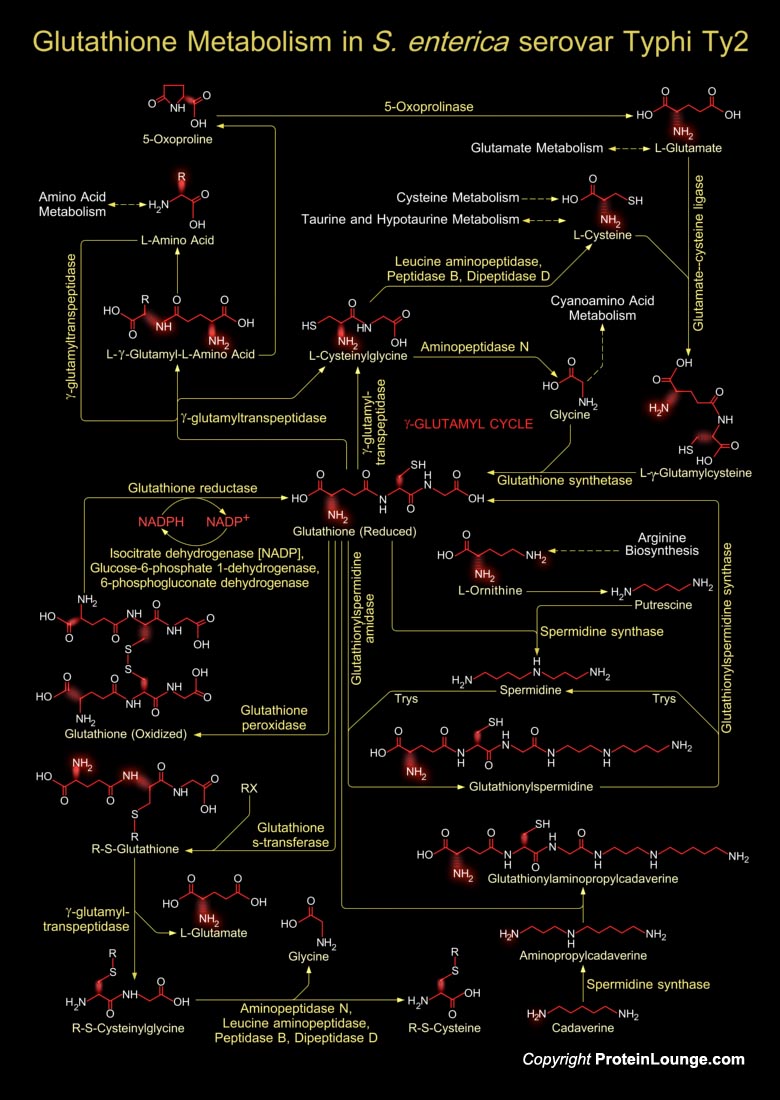
Glutathione is a sulfhydryl (-SH) antioxidant, antitoxin, and enzyme cofactor. It is ubiquitous in animals, plants, and microorganisms, and being water soluble is found mainly in the cell cytosol and other aqueous phases of the living system. It cannot enter most cells directly and therefore must be made available inside the cell from its three constituent amino acids: Glycine, Glutamate and Cysteine. The rate at which glutathione can be made depends on the availability of Cysteine, which is relatively scarce in foodstuffs. Furthermore, the Cysteine molecule has a sulfur-containing portion which gives the whole Glutathione molecule its ‘biochemical activity’. Cysteine can also enter the Glutathione metabolism through several other metabolic pathways like[..]
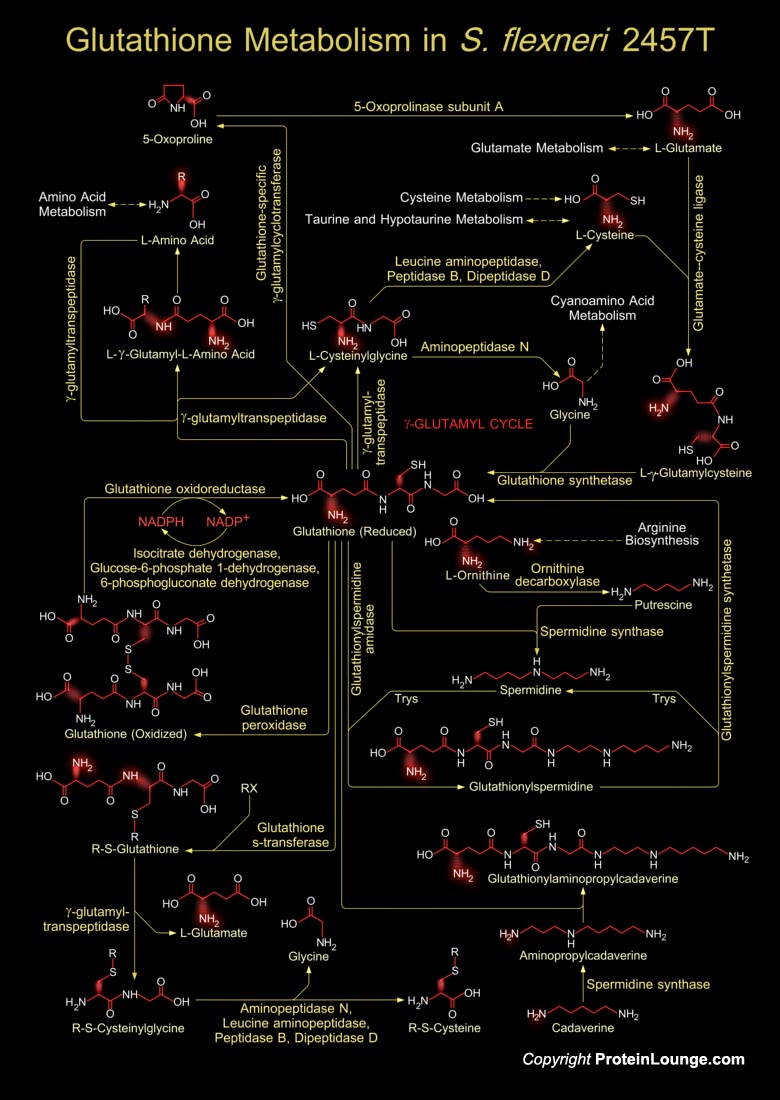
Shigella is a Gram-negative, non-sporulating, facultative anaerobic bacterium that causes Dysentery or Shigellosis in man. Shigella is highly invasive in the colon and the rectum, and is able to proliferate in the host cell cytoplasm, triggering an inflammatory reaction. The strain S. flexneri 2457T harbors four plasmids, which remains to be completed. Glutathione metabolism in Shigella occurs within cells in two closely linked, enzymatically controlled reactions that utilize ATP and draw on nonessential amino acids as substrates. Glutathione is a tripeptide, composed of glutamate, cysteine and glycine, and has numerous important functions within the bacterial cell. This tripeptide is specifically a thiol compound, present in the highest concentration in all types of[..]
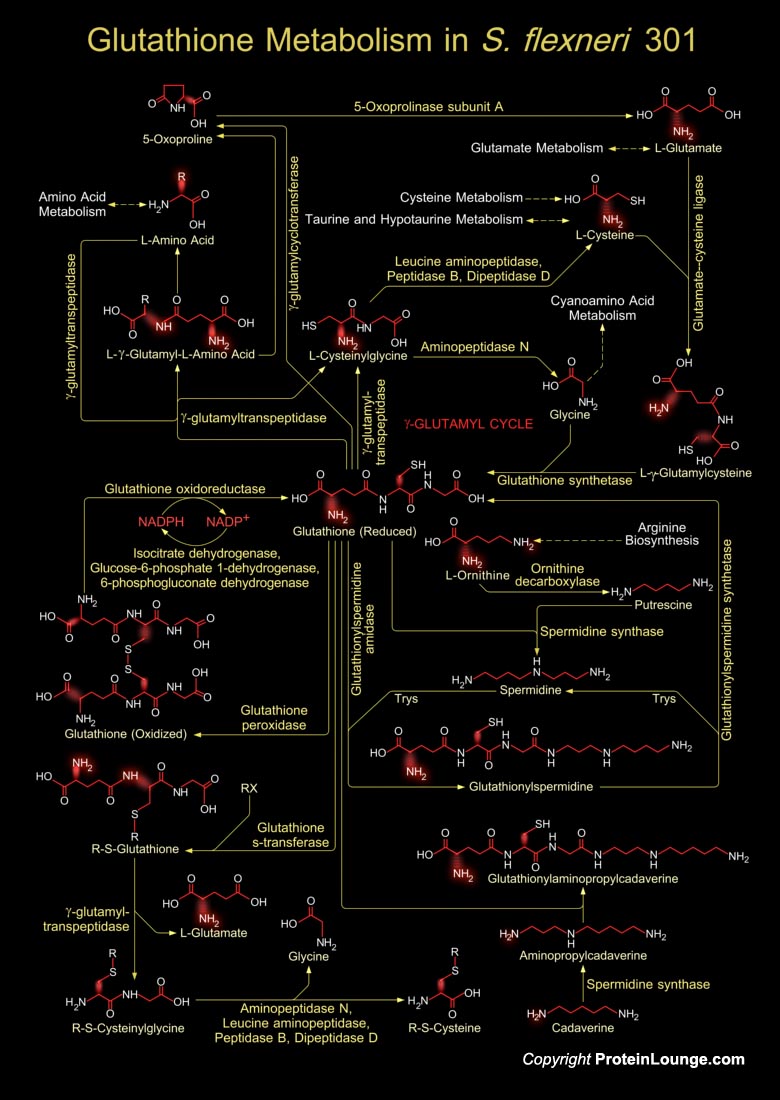
Shigella is a Gram-negative, non-sporulating, facultative anaerobic bacterium that causes Dysentery or Shigellosis in man. Shigella is highly invasive in the colon and the rectum, and is able to proliferate in the host cell cytoplasm, triggering an inflammatory reaction. S. flexneri 2a strain, 301 has been recently sequenced (Ref.1). Glutathione metabolism in Shigella occurs within cells in two closely linked, enzymatically controlled reactions that utilize ATP and draw on nonessential amino acids as substrates. Glutathione is a tripeptide, composed of glutamate, cysteine and glycine, and has numerous important functions within the bacterial cell. This tripeptide is specifically a thiol compound, present in the highest concentration in all types of cells (Ref.2).During[..]
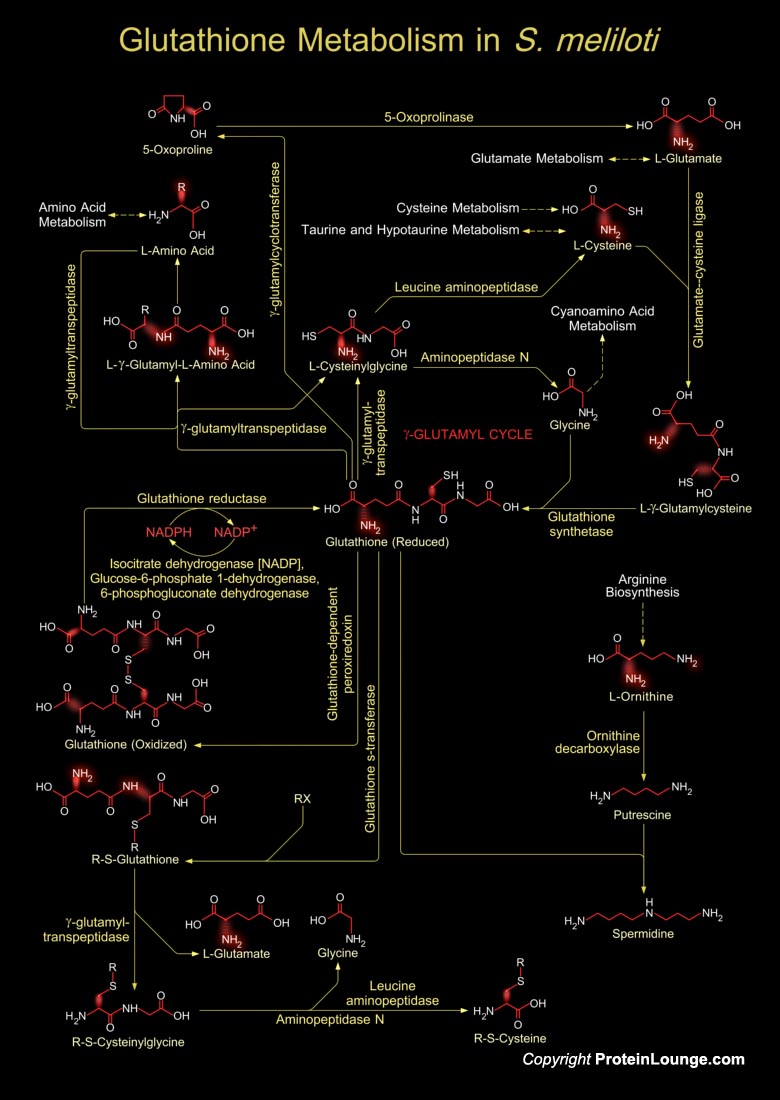
Glutathione is a sulfhydryl (-SH) antioxidant, antitoxin, and enzyme cofactor. It is ubiquitous in animals, plants, and microorganisms, and being water soluble is found mainly in the cell cytosol and other aqueous phases of the living system. Glutathione is a tripeptide composed of Glutamate, Cysteine and Glycine that has numerous important functions within cells. Glutathione is homeostatically controlled, both inside the cell and outside. It often attains millimolar levels inside cells, which makes it one of the most highly concentrated intracellular antioxidants. Glutathione exists in two forms. The antioxidant "reduced Glutathione" tripeptide is conventionally called Glutathione and abbreviated Gsh; the oxidized form is a sulfur-sulfur linked compound,[..]
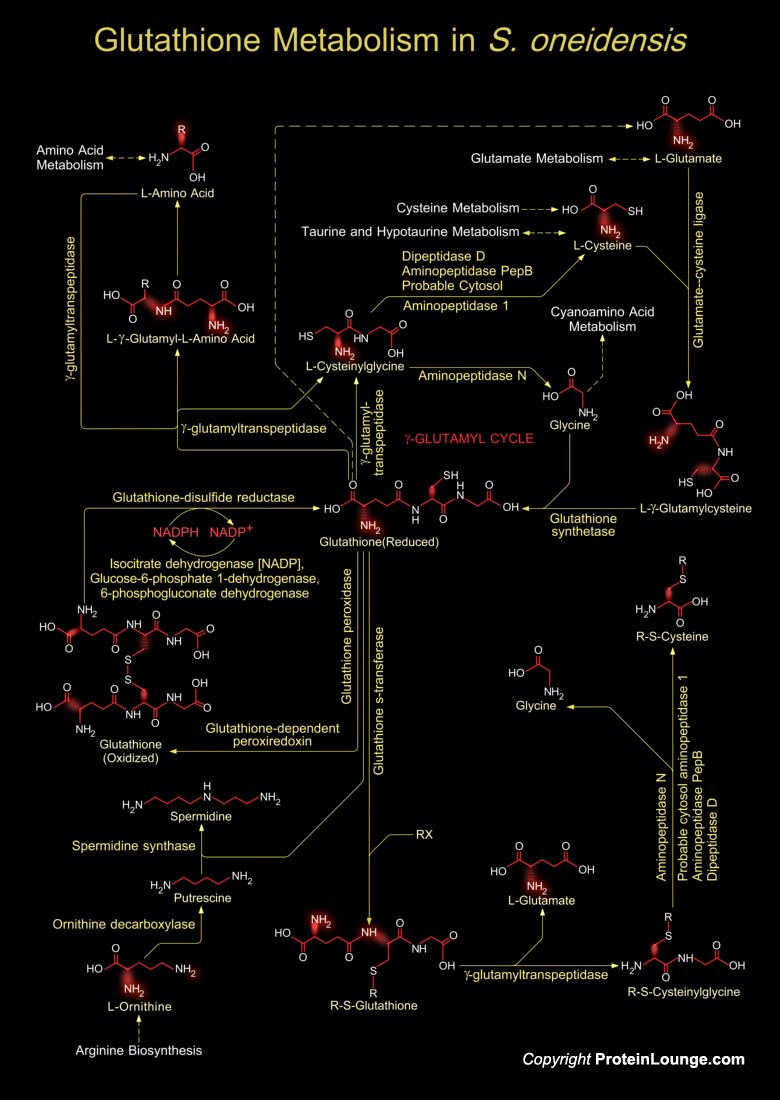
Shewanella oneidensis is a facultative aerobic Gram-negative bacterium. It uses oxygen as the terminal electron acceptor during aerobic respiration, but during anaerobic conditions, S. oneidensis undertakes respiration by reducing alternative terminal electron acceptors such as oxidized metals, fumarate, nitrate etc. The microbe can directly reduce both uranium and chromium from the dissolved liquid state. Such abilities facilitate the removal of dilute metal pollutants in both contained-storage and natural sites. Additionally S. oneidensis immobilizes toxic metals through the formation of insoluble metal sulfides. Thus, the bacterium is an important model organism for bioremediation studies because of its diverse respiratory capabilities, conferred in part by[..]

